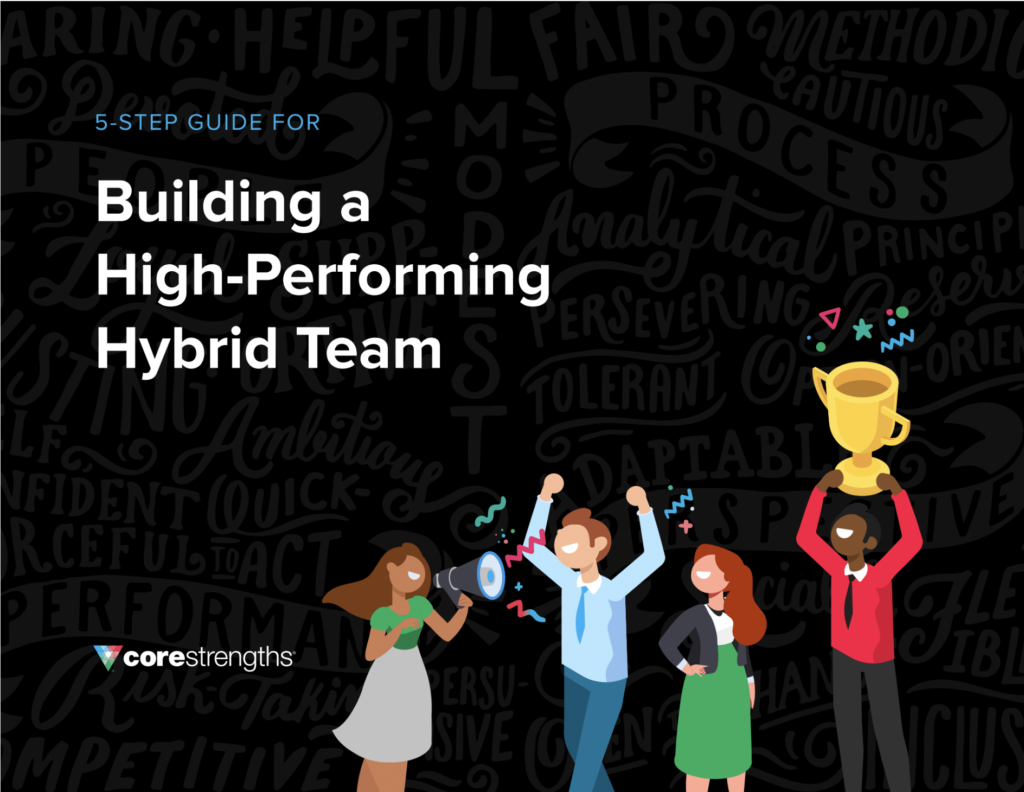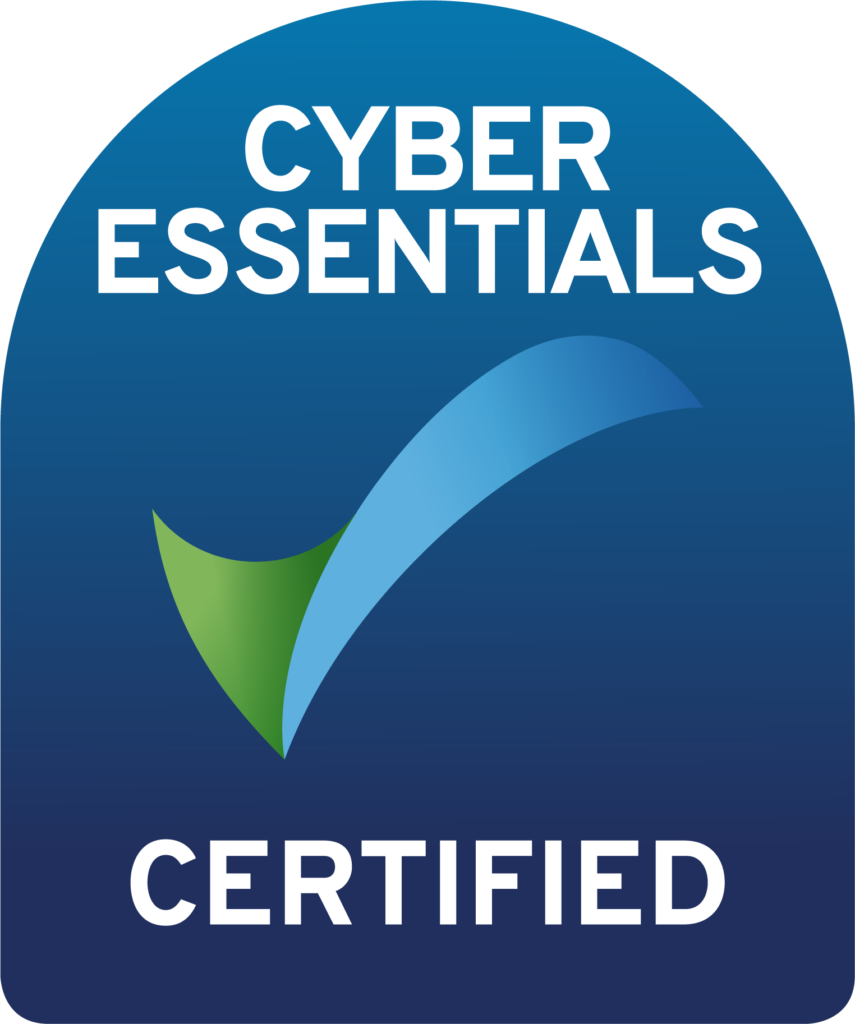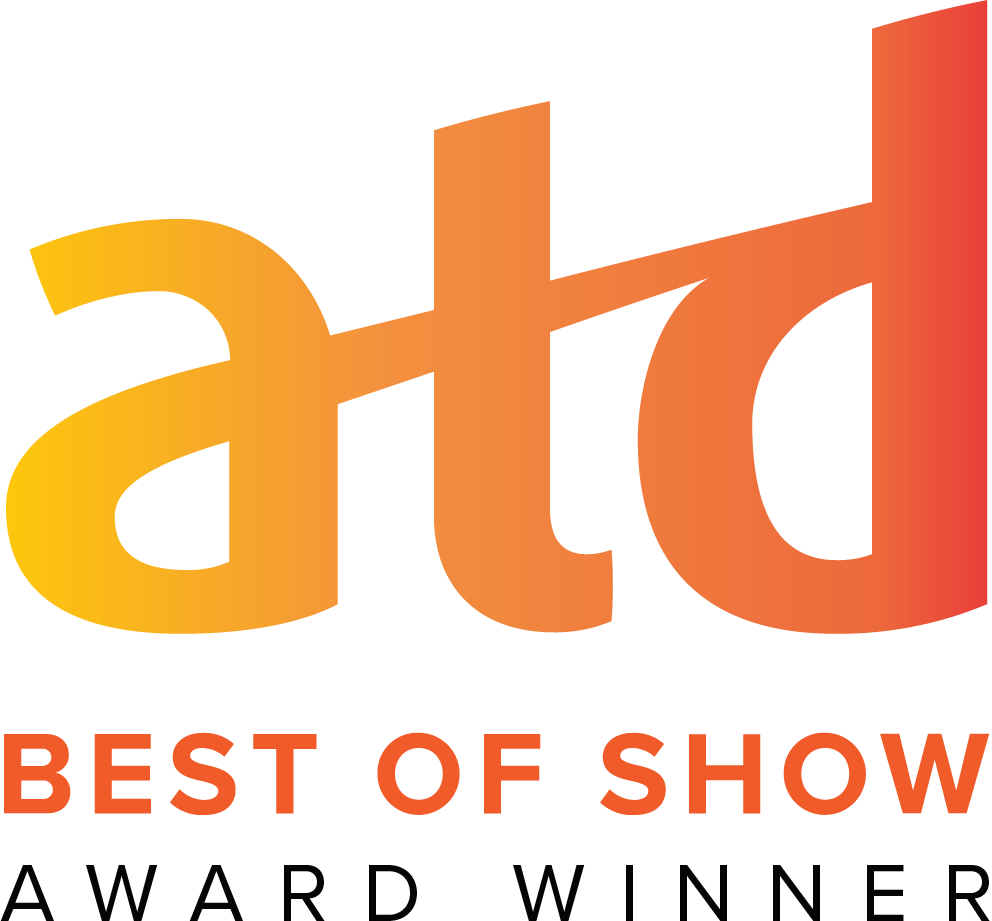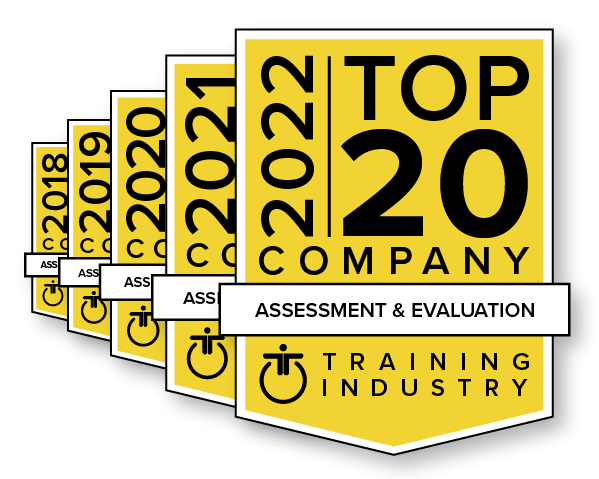Strengths assessments don’t just tell you what you already know about yourself — they can help you improve work performance and relationships.
If you’re a working professional, especially in the corporate world, chances are you’ve taken a strengths assessment at some point. Probably, that assessment has given you a sense of your “natural” inclinations, and it may have given you some insight into how to get your best performance at work.
Maybe you learned that you’re a highly effective “people person” because you’re sociable and helpful; maybe you excel at analyzing all options before making a decision.
When you think about the results of that strengths assessment — the areas where you really shine — do you view those strengths as innate traits, or choices you make in your behavior? And conversely, do you view the areas where you struggle as innate weaknesses, instead of possibly a hesitancy to choose a different strength?
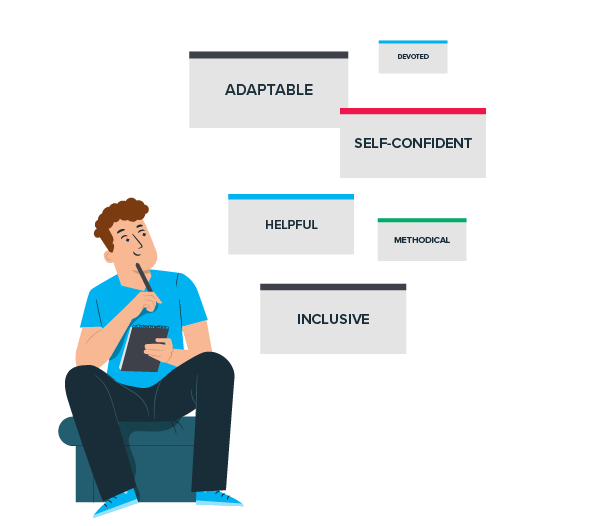
The distinction between viewing strengths as traits or choices is where the Strengths Deployment Index (SDI 2.0) from Core Strengths differs from other strengths assessments. We believe that everyone possesses all 28 strengths; however, we choose to deploy some strengths more frequently than others. For those who take the SDI, it’s often empowering to realize that they can be far more agile in the use of their strengths. As they learn to connect the things that matter to them (reasons connected to their core motives) to the strengths they choose less frequently, they find it easier and more comfortable to choose previously underutilized strengths.
Here’s how we view strengths, and what strengths assessments can tell us about performance.
What are strengths?
The objection that people often have to strengths assessments is that they feel pigeonholed by the results; if you perform well at certain things, and if those things are static and consistent throughout life, where’s the room for growth?
Core Strengths brings a growth mindset to the view of strengths. You can choose to develop a strength that falls anywhere on your Strengths Portrait, from one to 28, anytime throughout your life.
There are 28 strengths in the SDI 2.0 assessment, that all of us have the ability to choose:
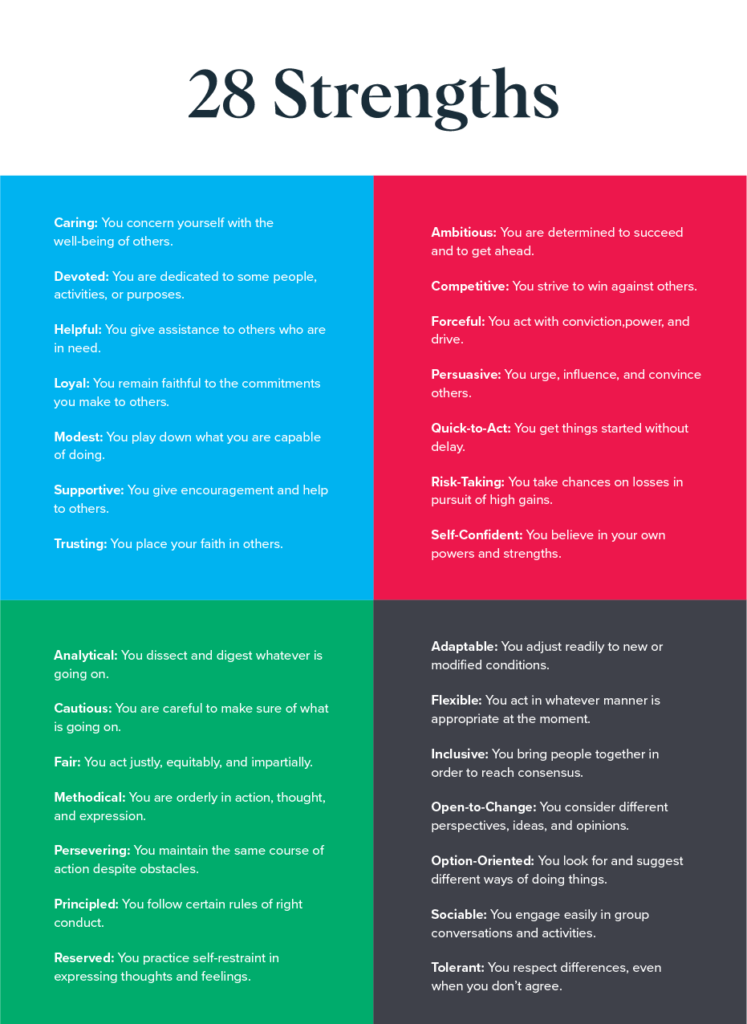
Another positive to viewing strengths as a behavior choice is that you can’t say, “I just don’t do X well” as an excuse for poor performance. Some strengths may not come as easily to you as others, but you can develop any one of them to the point of competence, once you connect it to what matters most to you.
Can strengths negatively affect performance?
The opposite of a strength is a weakness, right?
Not necessarily.
The strengths we choose to use less often (those ranked at the bottom of your Strengths Portrait) can feel like weaker skills, but relying too much on the strength we choose most often can put you at a disadvantage as well. We call these ‘overdone strengths.’
An overdone strength is the unproductive counterpart to a strength. People expect their top strengths to produce desired results, and they usually do, but not always. If we choose a strength and it doesn’t achieve the desired result, instead of choosing to use a different strength, we often just try harder at the strength we were already using. And when we do that, we can limit our effectiveness or create conflict in relationships.
For example, the person who has a top strength of Analytical is used to arriving at the best answer by analyzing. But if they spend too much time analyzing, they may end up thinking in circles or failing to act, potentially missing opportunities and deadlines. In this case, Analytical turns into an overdone strength: being obsessive as we become consumed by the desire to find the optimal approach or solution.
Overdoing strengths is often unconscious. Gaining awareness of the implications of overdone strengths can help you manage the frequency, duration, intensity, or context of the behavior for greater effectiveness. It also helps you make more informed decisions about the other strengths you could use in various situations and relationships to improve performance.
This is why it’s important to know the ranking of strengths in your Strengths Portrait even though you can choose to use any of them. Your top strengths are most likely to be overdone, and this makes sense. If we often choose these strengths, and they often produce the desired result, it may be difficult to realize we are overdoing them.
Your SDI 2.0 results bring overdone strengths into conscious awareness and give you the power to improve your relationships and your work performance.
How do you use strengths to improve performance?
One key piece of this puzzle that we haven’t talked about yet is motivation.
When you connect what really matters to you to your behavior choices (choices of which strengths to use), that’s when you become most effective in relationships and work performance. Someone who is deeply motivated by helping people may have strengths like Caring and Fair at the top of their Strengths Portrait, but they can choose to use strengths like Persuasive, or even Forceful, to achieve their humanitarian goals. When someone who is driven to help and encourage others sees a situation where people are being mistreated, the choice to be forceful in opposition to the injustice will feel authentic — because choosing the strength of Forceful is connected to the motive to help, protect, and encourage others.
A great example of this is from the movie The Blind Side. In the movie, Michael Ohr (who would go on to become an All-Pro NFL lineman) is taken in by a family after he is left homeless. Michael is a kind (and wounded) young man who is motivated to help, protect, and encourage others. He is also a very large person in stature. There’s a scene at his football practice where the coaches are frustrated with Michael because he is consistently losing to smaller players. Coaches are yelling at him, challenging him to be more competitive and more committed to winning. And his performance just keeps declining. Finally, Sandra Bullock (who plays Michael’s guardian) storms on the field and says to Michael, “Michael, this quarterback is your family. Your job is to protect the family; can you do that?” Michael simply nods and says, “Yes Ma’am”. As she walks off the field, she reminds the coach, “Know your players!” Michael succeeds throughout the rest of the practice.
It’s clear that Michael Ohr doesn’t have Forceful and Competitive as strengths he uses often. Seeing those strengths used destructively likely conditioned him to be wary of them. However, once he connected those strengths to his motivation to help, protect, and encourage others, he performed at the very highest level and can choose those strengths for reasons that feel authentic to him.
Once you begin to view strengths as a choice and realize you can connect them to what matters to you, you’ll have to embrace a growth mindset and be patient when learning new skills. The exciting aspect of this strength-based agility is that you may find it easier to improve than ever before.
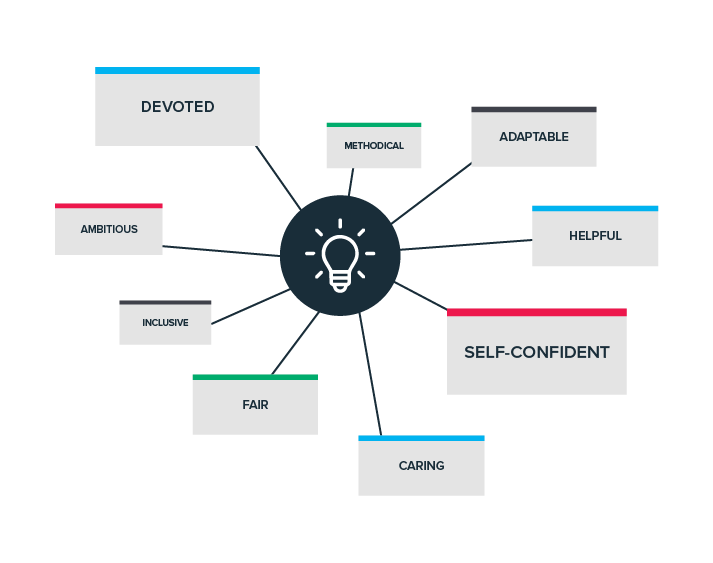
You can also use strengths to improve performance when you partner with people whose Strengths Portrait may look very different than yours — it might even be almost the inverse. When working on a project together, people with different strengths can play off each other to get the best out of everyone. It’s not uncommon for someone who has Risk-Taking at the top of their Strengths Portrait to effectively partner with someone who has the strength of Cautious at the top of their portrait. Why? The relationship helps the first person to take risks, but with a dose of caution, while the second person can be cautious, but with less suspicion and timidity.
The Core Strengths assessment can tell you a lot about performance.
Take the SDI 2.0 assessment — or for best results, offer it to your entire team or company — to find out how the above 28 strengths rank for you. The results of the assessment also give you insights into your unique Strengths Portrait, and understanding of your primary motivations, and tips on using your strengths to get the best results through relationships.

